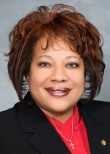
Even as the18-month moratorium on land-based wind energy projects in North Carolina is set to expire at the end of the year, rural Tyrrell County has likely lost out for good on hundreds of thousands of dollars in tax revenue from a proposed wind farm that was planned before the ban.

“We were one week away from the project developer having a public meeting in Tyrrell County so people could view maps and see where it would have been,” county manager David Clegg said in a recent interview. “Up until this moratorium, we had a contractor ready to construct wind mills in Tyrrell County.”
Supporter Spotlight
Known as the Little Alligator, the $200 million project that was being planned would have had 29 turbines erected on private land owned by timber company Weyerhaeuser.
Clegg said the wind project would have provided much-needed economic development in the coastal county, one of the poorest in the state, adding about $300,000 to the tax base.
The developer, RES Americas, is apparently no longer interested in Tyrrell County. “We have no plans to pick the project back up,” Alicia Rivera, marketing and communications manager for the company, said this week in an email.
A measure added during closed-door negotiations to House Bill 589, a popular bill that authorized homeowners to lease, rather than purchase, rooftop solar panels, the moratorium forbids the state Department of Environmental Quality from issuing permits for new and expanded wind power projects.

At the time, state Sen. Harry Brown, a Republican from Jacksonville and the Senate majority leader, said the moratorium was needed to allow the legislature to do more study on the potential impact of wind turbines on military operations in the state. An appropriation of $150,000 was provided for new maps detailing military parameters.
Supporter Spotlight
Brown, a longstanding opponent of wind energy, did not respond to emailed and telephone messages seeking comment. He was one of 10 state legislators who had signed a letter to the Trump administration seeking to shut down the Amazon wind farm in 2017, claiming the 104 turbines affected Navy radar operations in Virginia.
Clegg said he was a member of the panel that worked for two years on the Seymour Johnson Air Force Base and Dare County Range Joint Land Use Study, or JLUS, that was approved in May 2017. The study looked at the military operations in the area and potential conflicts, including wind farms. If there were problems with any operations, Clegg said, the military would shut them down if necessary.
“You have people apparently choosing to intervene on behalf of the military, when the military is not stating a problem.” Clegg said. “Why does the Department of Defense have to be protected by a state official in North Carolina?”

But the North Carolina General Assembly was not persuaded that the panel was protecting the military interests, despite the military’s approval of the JLUS study.
“I made it clear we had the definitive maps,” Clegg said. “We reached out to the members of both the House and Senate and tried to explain what we felt that the joint land use study showed, and what it meant to Tyrrell County.”
State Sen. Erica Smith, a Democrat who represents Senate District 3 that includes Tyrrell, said in an email that the mapping overview that was ultimately produced earlier this year by contractor AECOM is currently available in a digital version only for legislators to review upon request at the Department of Commerce. The legislator would have to provide the GIS, or geographic information system, location and GPS coordinates to input into the software, and then the platform would identify all military operations and whether there were conflicts. The general public is not allowed access to the maps, she said.

“In essence, there are no printable maps available for the public nor for members,” Smith said. “However, members of the General Assembly can access the database and receive information based on inputs.”
In an interview before the Thanksgiving holiday, Smith said that her understanding was that the moratorium would be allowed to expire, at least in part because its stated purpose – to provide time for additional study – had been fulfilled by the new maps. But she said the new maps were not needed, and the Republican leadership was unmoved by her arguments that Tyrrell County would lose “a once in a lifetime” economic development opportunity and that the military had no problem with the current maps.
“It’s very frustrating when you have those kind of policy makers,” she said. “The military did not request this. It was unwarranted and really unfair and almost bordering on unethical. It seemed to be based on the whims of one senator’s political prerogative, as opposed to doing what is best for North Carolina.”
Smith was also concerned about the long-term damage the moratorium has had on the wind energy development in North Carolina.
“This industry needs certainty, and this (policy) does not provide certainty,” she said.
Although another proposed project in Chowan County was delayed by the moratorium, Timbermill Wind is still on track to start operations by late 2020, according to Senior Development Manager Don Giecek.

The project recently received substation and transmission rights of way permits from the county and is in the process of obtaining state and federal permits, Giecek said in a Nov. 30 email. Developer APEX Clean Energy began work on the project in 2013 and has already paid more than $500,000 in lease payments to local landowners.
“Timbermill Wind will also benefit Chowan’s economy in the near term with construction jobs and local purchasing of materials and services,” Giecek said. “In the long term and in addition to the annual leaseholding, the project promises to bring sustained tax revenue to Chowan County for local governments and schools, as well as 30 years of local purchasing, employment and investment.”
Amazon Wind Farm US East in Pasquotank and Perquimans counties, the state’s first land-based wind farm, went fully operational in February 2017. In addition to the company’s initial $400 million investment, farmers are being paid a total of $320,000 a year in annual lease fees, and the counties are collecting hundreds of thousands of dollars in property tax revenues a year, which will increase 1.5 percent annually over the 30-year life of the project.
Amazon developer, Avangrid Renewables is currently working on proposed development of the state’s first offshore wind project off Kitty Hawk. According to communications manager Paul Copleman, the company is in the early stages of the environmental studies and meteorological analysis and design for the site. He said the site assessment plan is expected to be submitted in the third quarter of 2019, and if all goes well, the project could be online as early as 2025.
As to the radar effects at the Amazon project, Coble said in an email that the results of a Massachusetts Institute of Technology study affirmed “our cooperative work with the Navy on this matter and appropriate siting” of the turbines.
With Gov. Roy Cooper’s recently announced goal to reduce the state’s carbon emissions, renewable energy sources such as solar and wind are poised to expand statewide, said Katharine Kollins, president of Southeastern Wind Coalition .
Costs for both wind and solar development have both dropped dramatically in recent years, she said, but right now solar is ahead of wind competitively in costs.
For the Southeast, wind resources are comparable to those in Europe, which in 2017 were 3.5 cents to 5.5 cents per subsidized kilowatt-hour. But turbines have to be taller in the Southeast than the Midwest, where wind power in 2017 cost 1.5 cents to 2 cents per kilowatt-hour. When the federal tax credit is completely phased out in 2019, Kollins said she that future location of wind production will depend on progress of increased efficiencies and cost cutting in the industry.
But the reality is that wind and solar industries already employ twice as many people as the coal industry, and jobs in the industry pay well. Last year, wind technician was the fastest growing job in the nation, with an average salary of $80,000 a year.
North Carolina lawmakers, for the time being, may have “successfully scared off” some wind power developers, Kolliins said, but she said that the conditions for wind energy development are still favorable in North Carolina.
“I think the public sentiment for renewables is higher,” she said. “I think North Carolina’s wind prospects for land are decent, but very good for offshore.”







